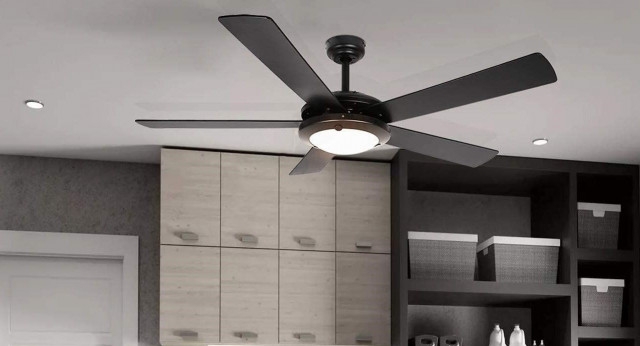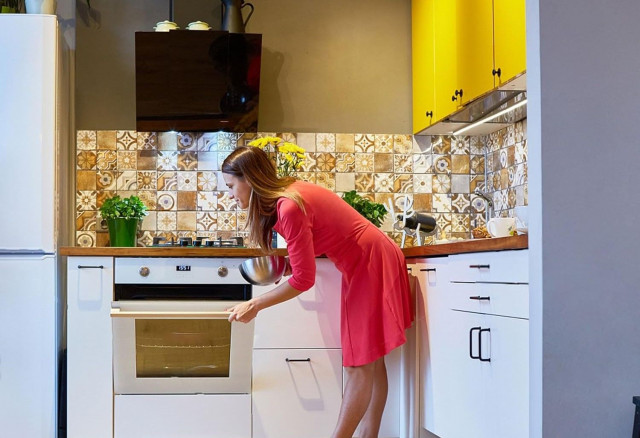The kitchen is the beating heart of the house. This is where you'll spend the majority of your day, preparing meals for your family and friends and gathering with them. Among the various criteria and design features that your kitchen must-have, appropriate ventilation should not be overlooked.
When you cook, you emit a great deal of gas, smoke, and grease into the air. The grease, oil, and gas will remain in the air if there is no exit point. Not only will your kitchen (and home) smell unpleasant, but it will also feel greasy, oily, and nasty.
This is the last thing you want in a location where you should feel at ease, happy, and, most importantly, safe and healthy. These are the main reasons why you should improve the ventilation in your home.

Improving kitchen ventilation
Every time you use the stove, turn on the range hood
Turn on the range hood every time you use the stove—and turn it on when you start cooking—to reduce aromas, enhance air circulation, and trap particles from burned food and greasy cooking. Do not wait until you have completed cooking to turn on the kitchen exhaust fan.
While we're making frequent range hood use a habit, let's also make it a routine to keep the appliance in good working order. If your range hood has a temporary filter, replace it at least once a year and more frequently if your stovetop is frequently used.
Dish soap and a wire brush can be used to clean metal mesh and baffle filters. If you see any grease accumulation, punctures, warping, or rust on the filter, clean or replace it right away.
Set up a ceiling fan
Installing a ceiling fan without windows is another option for improving kitchen air quality. A ceiling fan can assist in moving hot air around so that it does not sit and cause moisture. Consider installing something that cools a room and helps ward off undesirable odors when looking for innovative ways to improve ventilation in a windowless kitchen.
Ceiling fan pricing can be considerable, so look for models with the features you like. Additionally, before installing them, make sure they are the suitable size; you can check this by measuring the kitchen ceiling, you also consider a quiet ceiling fan if you want a quiet kitchen.
Invest in a grease spatter guard
Purchasing a splatter guard is one of the simplest and least expensive ways to enhance your kitchen airflow. When cooking, place these little gadgets over your pots and pans to keep grease and grime from flying around your kitchen.
It's not the ideal solution for cooking odors, but if you don't have a range hood, it can be really useful. Even if your kitchen has a ventilation system, a guard will assist in keeping your hood clean if you're preparing a messy dinner. Consider what works best for you and your family when selecting a ventilation hood or accessories.
There are several aspects to consider when selecting the proper fit, including the amount of space in your kitchen, the sort of appliances you use to cook, and whether you require an outside ventilation system or one that recirculates air.
Make use of the back burner
Some hood fans have a low efficiency of capturing. They may be good at collecting and expelling impurities directly beneath them, but they may be less effective at removing fumes that are outside the hood enclosure's perimeter.
Cooking on your stove's back burners immediately under the fan ensures maximum smoke and grease removal.
Open the windows
Opening windows lets in fresh air, but how you do it has the largest impact on airflow and, during meal prep, kitchen ventilation. Keep interior doors open and then open an assortment of windows and/or external doors to produce a draft for the best results.
This ensures that air does not simply enter your home but also travels through it, pushing stagnant, dirty air out.
Finally, fresh or filtered air is the best way to combat poor airflow in any kitchen, so resist the urge to simply spray air fresheners to mask odors. These products actually increase pollution levels while doing little to address the root problem.
Prevent exhaust system pollution
The kitchen ventilation system must be serviced on a regular basis. The smoke, steam, and grease residue that arises from cooking can readily contaminate the ventilation system's ducts, hoods, and fans.
Unwanted harm might occur if the exhaust system is not kept clean. As a result, the exhaust system must be inspected on a regular basis, and it must always be kept clean. Furthermore, well-designed kitchen ventilation with a filtration membrane can significantly reduce the amount of residue stuck on the exhaust system.
Range Hoods for Under Cabinets
Range hoods are positioned beneath kitchen wall cabinets. These hoods are useful for saving space. They are less noticeable and may be easily incorporated into any kitchen design.
They pull in and filter polluted air using a fan before venting it outdoors with an exhaust fan. Some are capable of recirculating clean air back into the kitchen. They are simple to install and inexpensive. Some models include light and energy-saving features. They have limited ventilation power and can be fairly noisy, which is a disadvantage.
What are the five negative consequences of kitchen ventilation?

Poor kitchen ventilation can have serious consequences for your health, home, and budget. Here are five consequences of poor kitchen ventilation to be aware of:
Problems with health: Poor kitchen ventilation can result in the accumulation of dangerous pollutants such as carbon monoxide, nitrogen dioxide, and particulate matter. These contaminants have been linked to respiratory troubles, headaches, dizziness, and other health problems.
Unpleasant odors: Cooking produces a lot of aromas, and those smells can linger in your home for days without sufficient ventilation. This might make your home uncomfortably hot and stuffy.
Home damage: High humidity levels can also cause home damage, such as peeling paint, warped wood, and water damage.
Increased energy costs: If your kitchen does not have sufficient ventilation, it can become quite hot and stuffy, causing your air conditioning system to work more and consume more energy.
Why ventilation is essential for a healthy cooking environment
Above all, ventilation is necessary to avoid inhaling potentially dangerous gases produced during routine cooking processes.
When proteins and carbohydrates are cooked, they can produce compounds known as aldehydes or alkanoic acids. These compounds are known to cause respiratory difficulties, and other aromatic hydrocarbons and heterocyclic substances may even be carcinogenic. Thus, they must be eliminated from kitchen areas as quickly as possible.
To learn more about kitchen ventilation, please visit our website Ceiling Fans Living and you can find the necessary items suitable for your kitchen.
Cooking workers have increased rates of pneumonia and bronchitis (possibly caused by fatty molecules), and long-term exposure is connected with early mortality, indicating that kitchen ventilation is a severe public health issue.
Conclusion
When the temperatures begin to climb throughout the summer months, you'll realize how important it is to have proper ventilation in your kitchen. If you believe your kitchen lacks sufficient ventilation, you should take the required steps to enhance it.
Small modifications to larger and more permanent changes are all worthwhile when your home seems lighter and airier. The suggestions above can help you get started.
⫸⫸⫸ See Also: Top Best Products - Saving Your Money With List Of Products Ceilingfansliving.com






